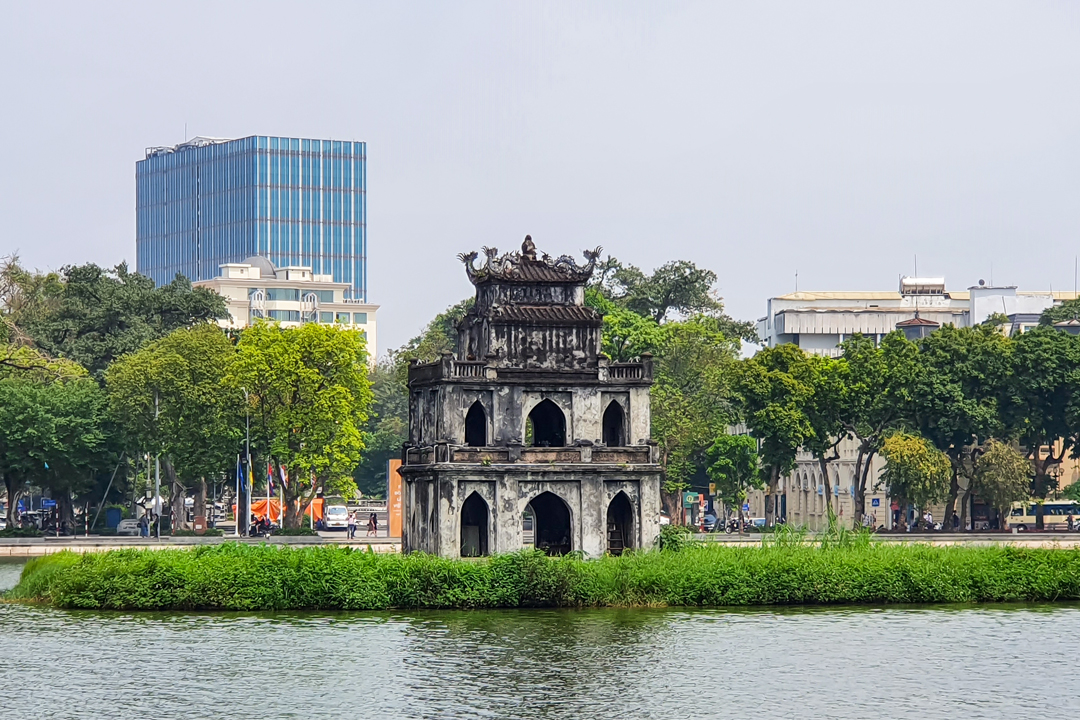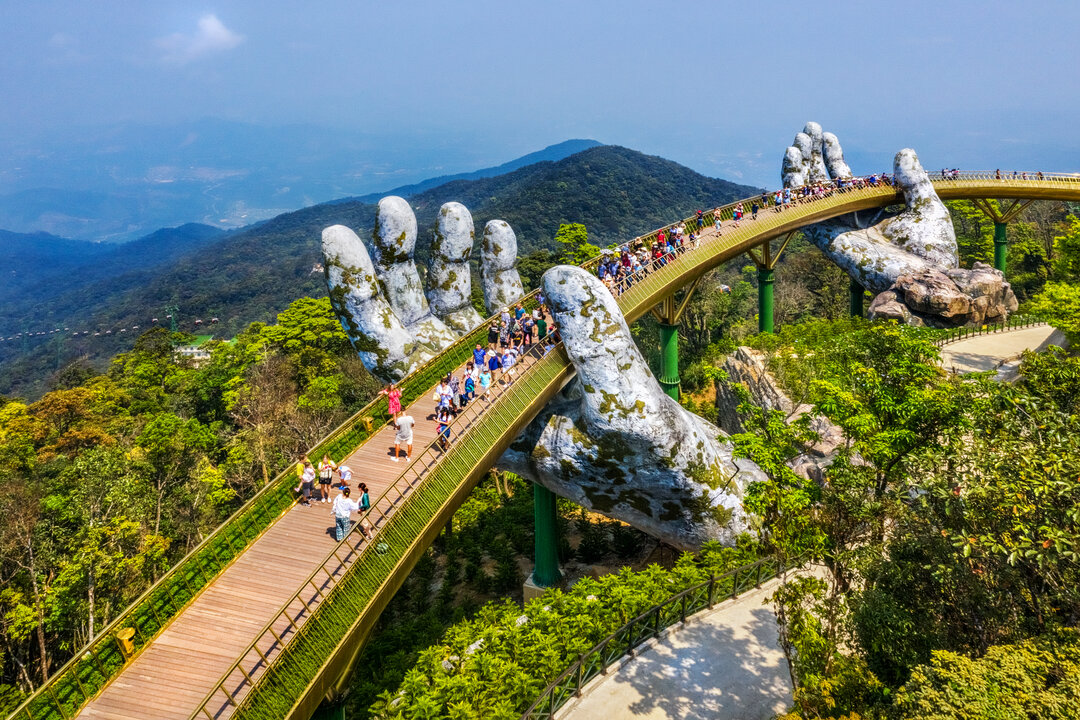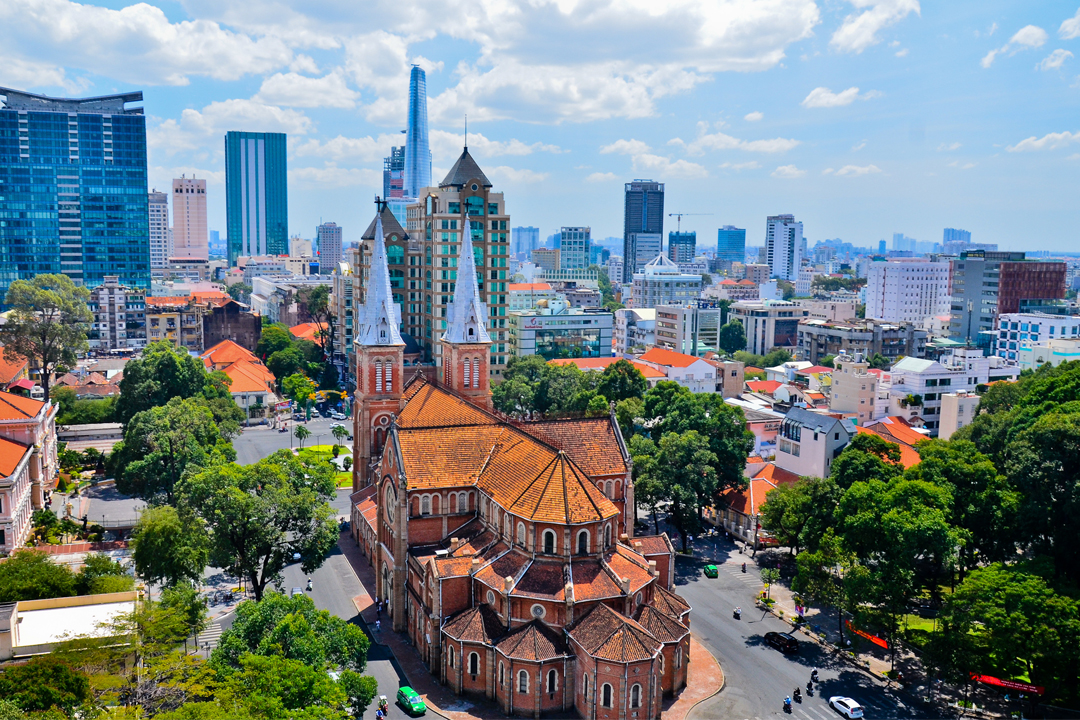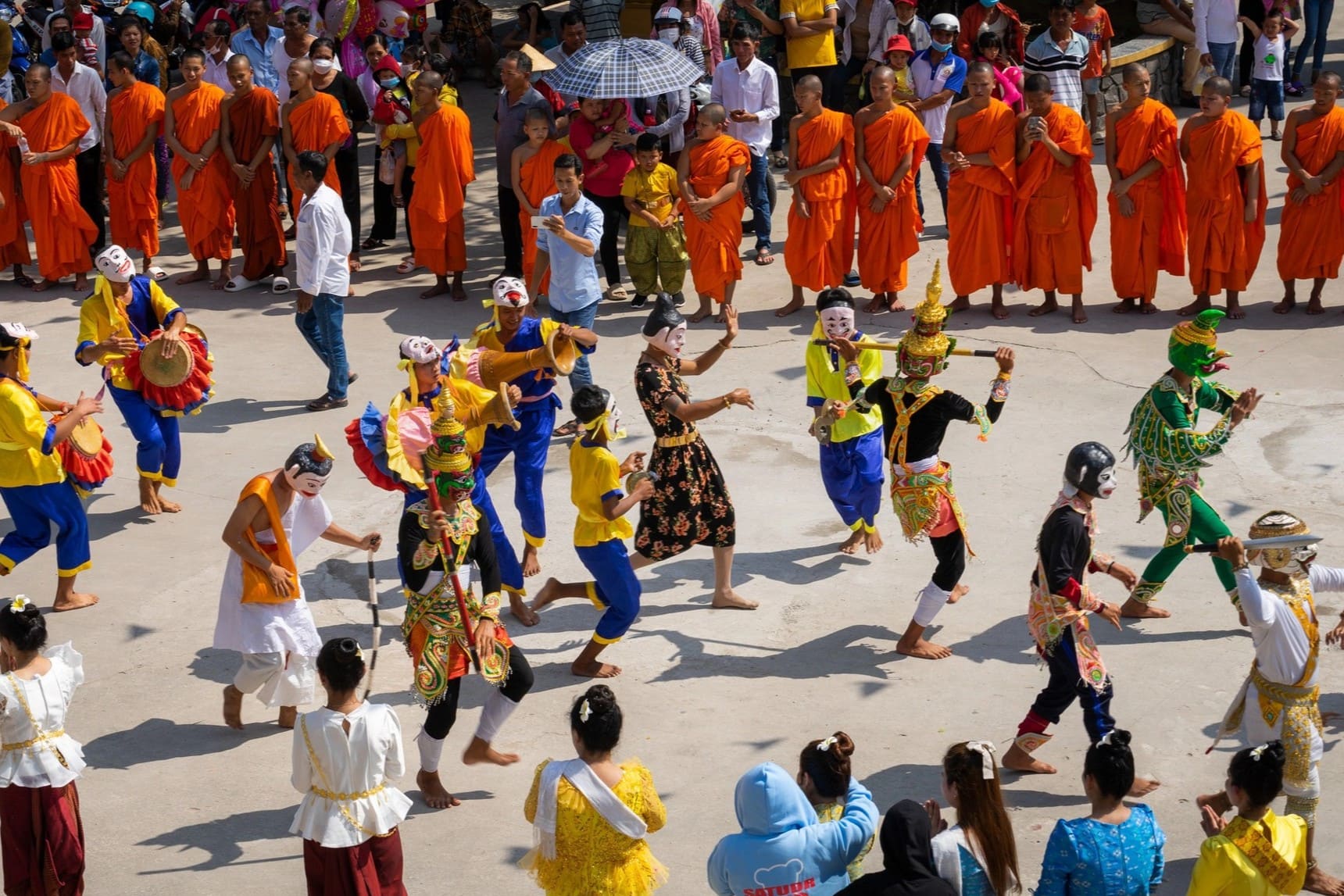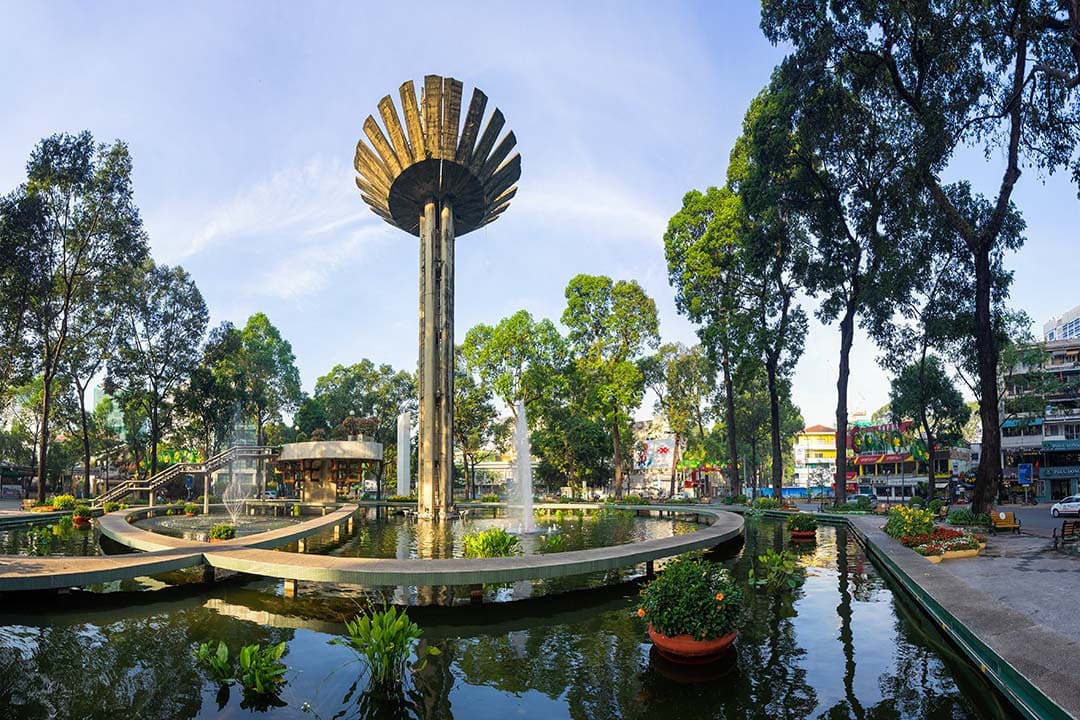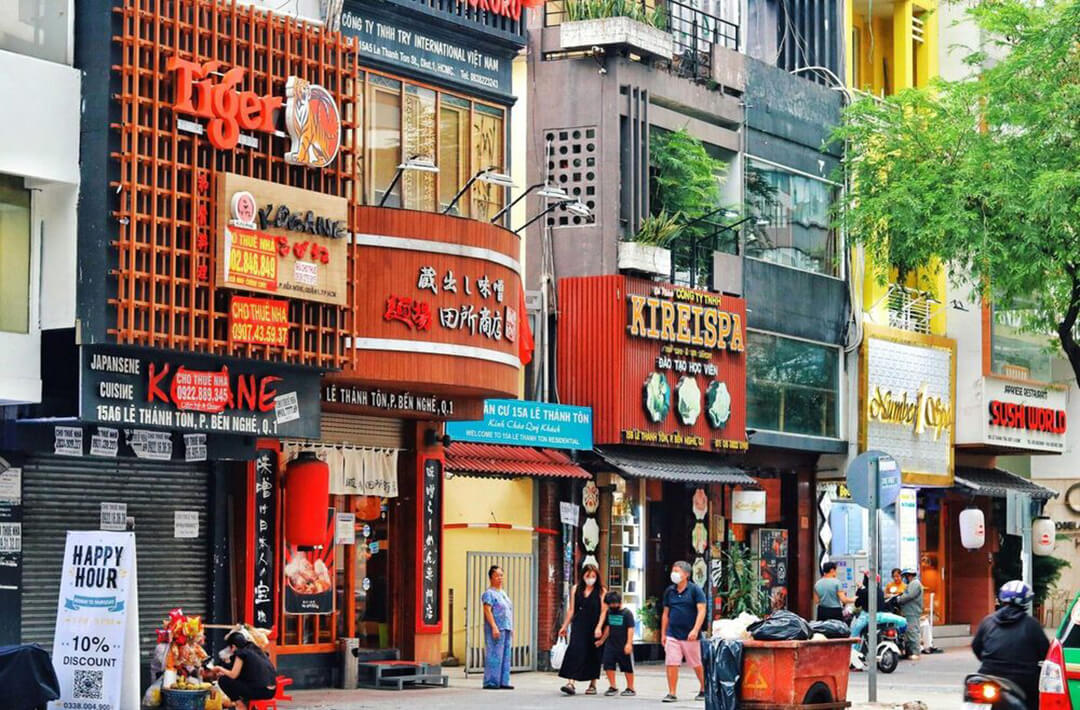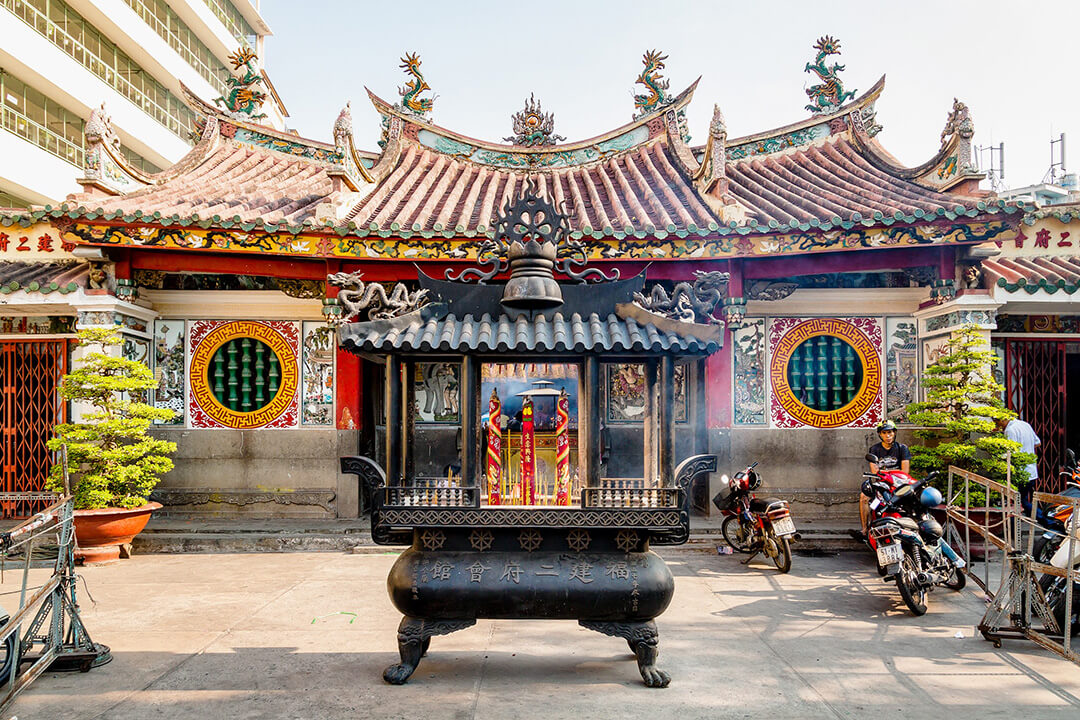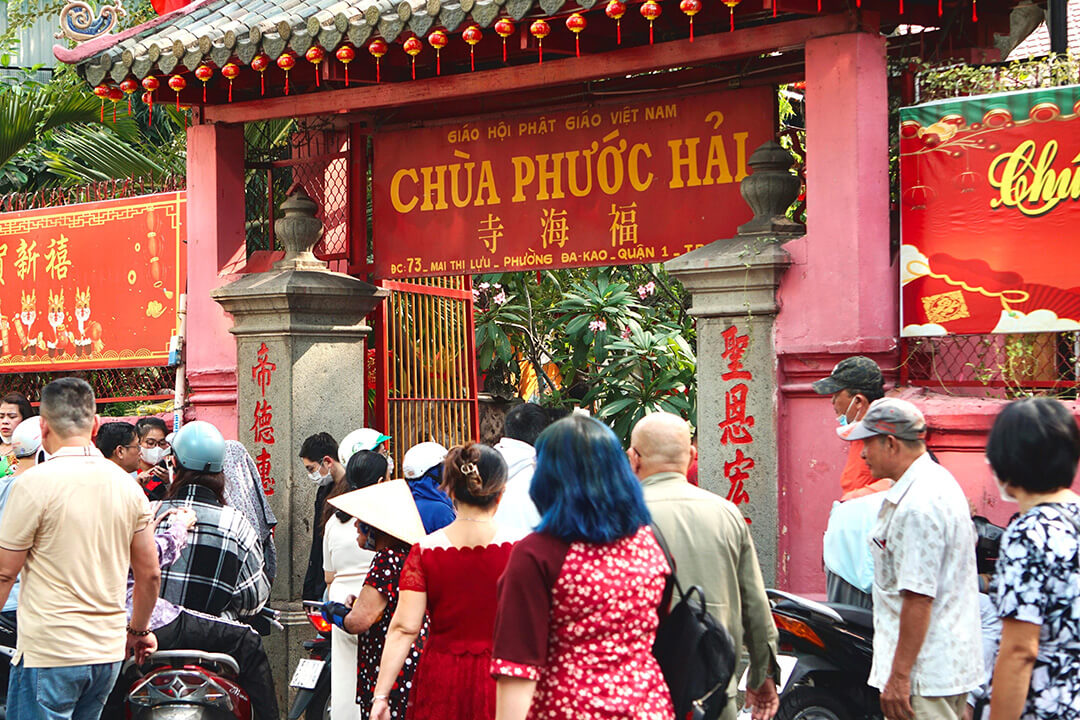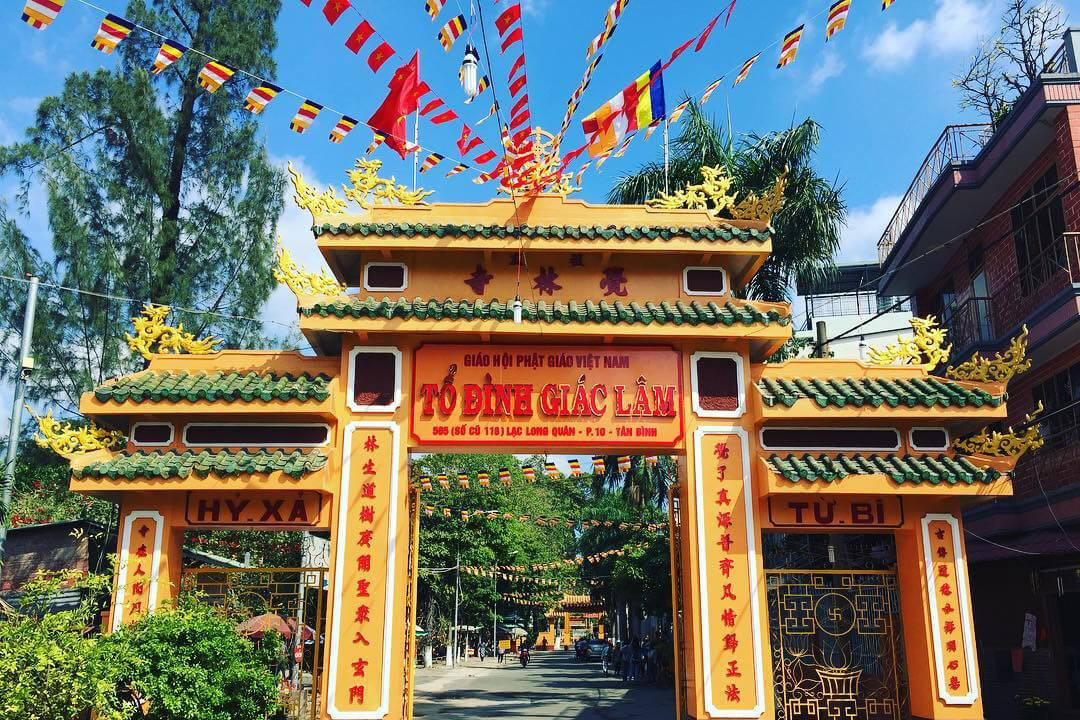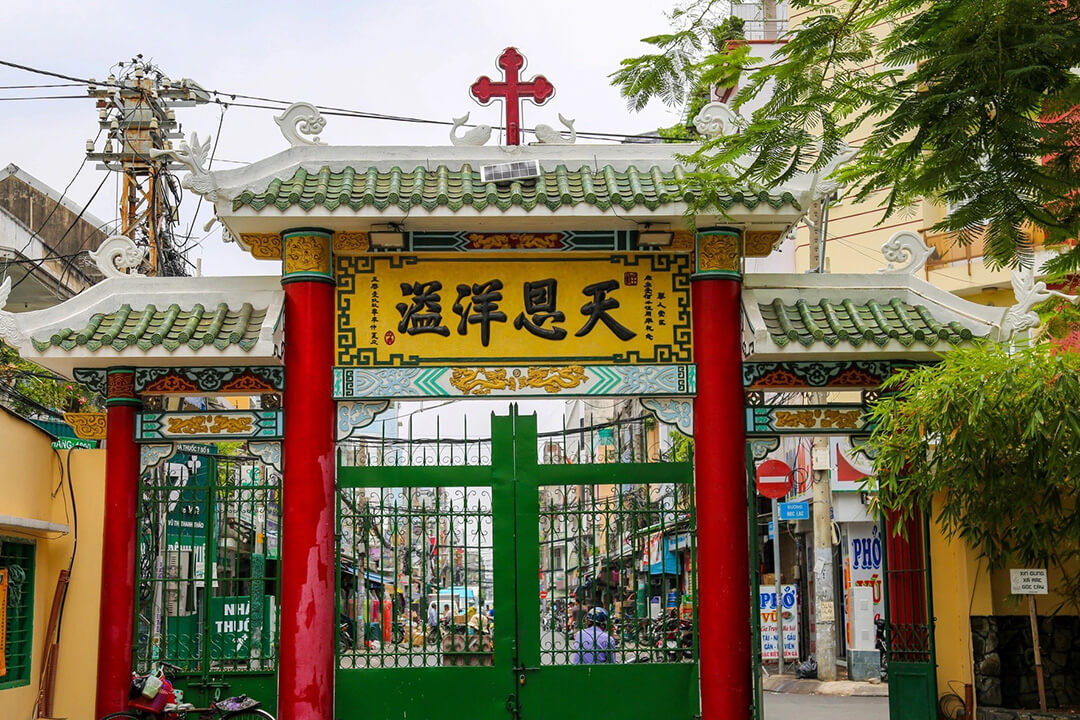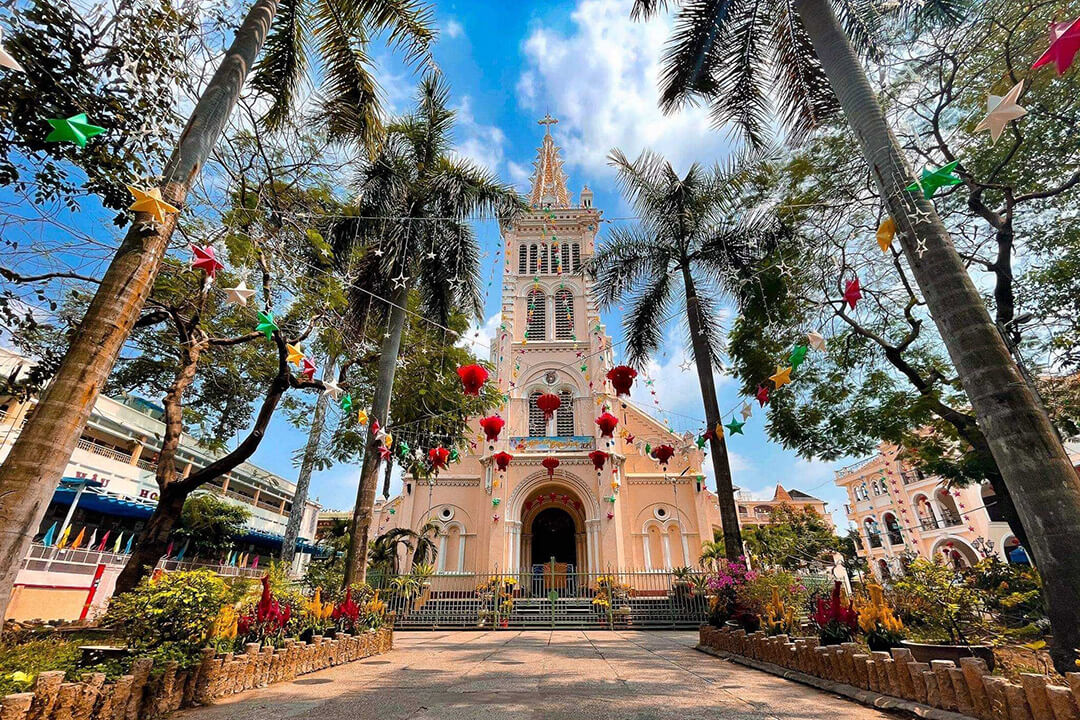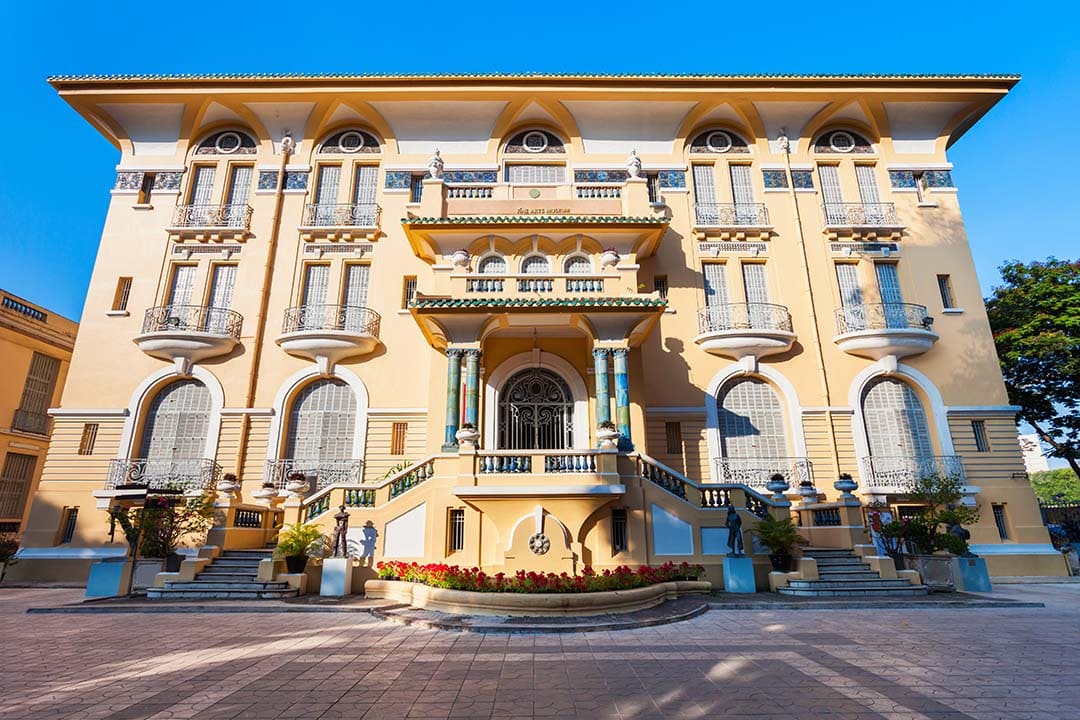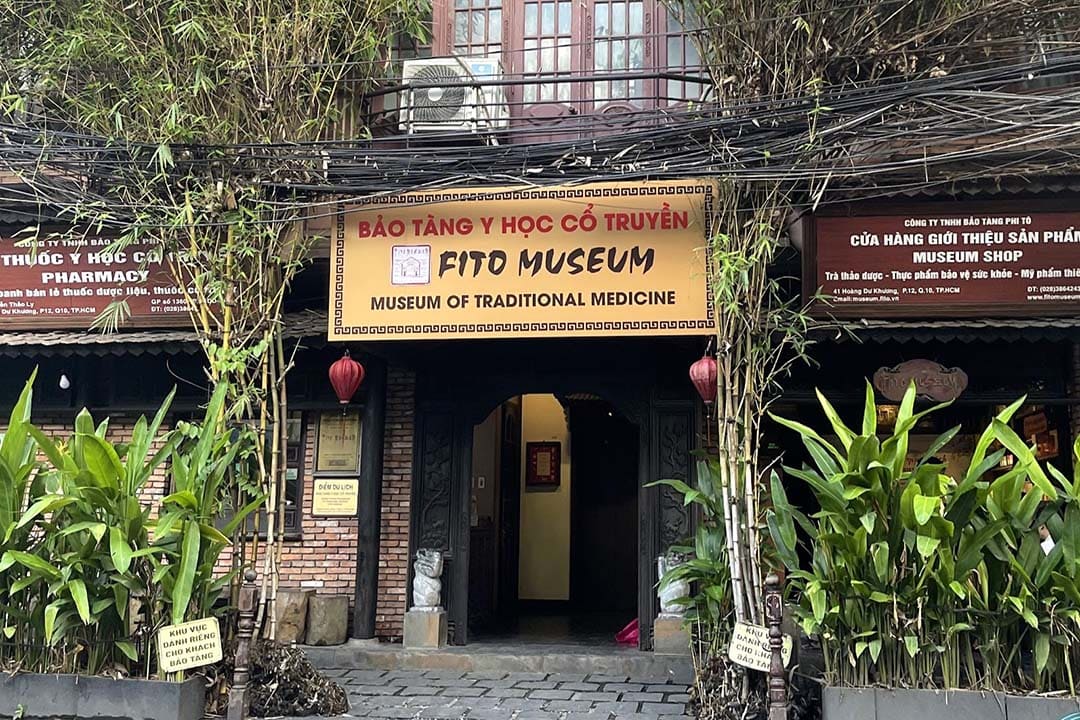Oct - 06 - 2025
Turtle Tower is an iconic symbol of Hanoi, situated on a small island in the centre of Hoan Kiem Lake. Its image has long been tied to the city’s identity, blending legend, history, and tranquillity at the very heart of the capital. While the tower itself is not open to visitors, its beauty is best admired from the lake’s edge. In this guide, you will learn its history, architecture, and nearby attractions to explore. With GTrip, discover why Turtle Tower remains one of Hanoi’s most cherished landmarks.
Where is Turtle Tower in Hanoi?
Location: Le Thai To Street, Hoan Kiem Ward (formerly Hang Trong Ward, Hoan Kiem District), Hanoi
Turtle Tower is located on a small turtle-shaped islet in the center of Hoan Kiem Lake, covering about 350 square meters. The tower features a rectangular layout with four floors, each smaller than the one below, reaching a total height of 8.8 meters. Rising from the middle of the lake, Turtle Tower stands out as a distinctive architectural landmark of Hanoi.
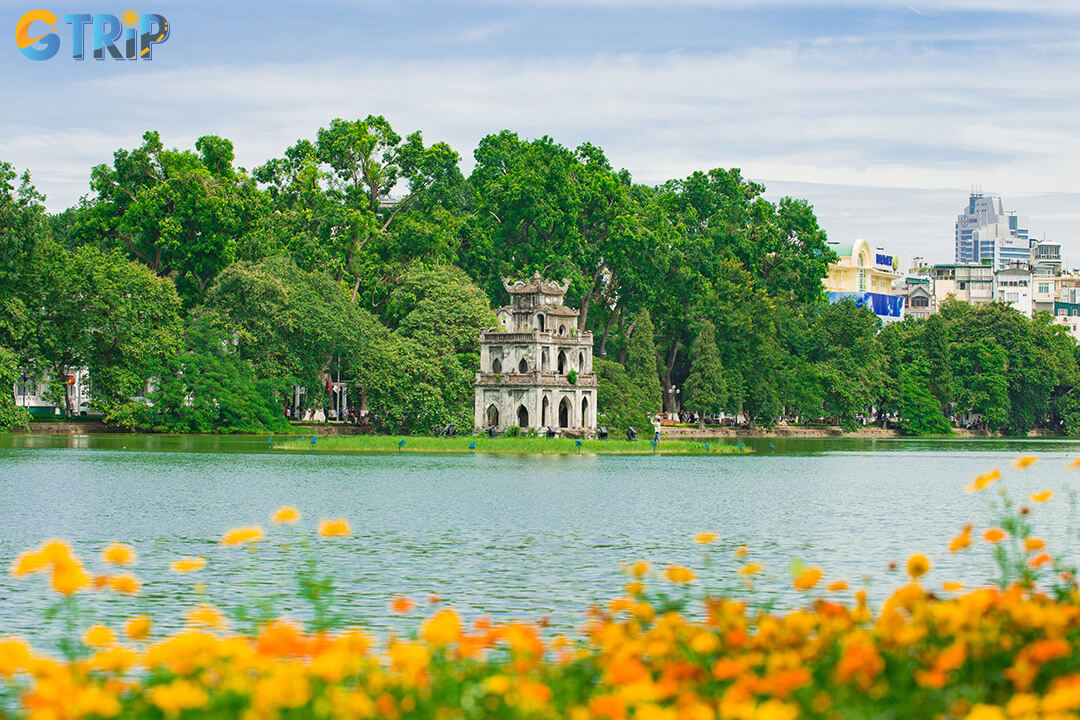
Turtle Tower is a distinctive Hanoi landmark that blends French Gothic elements with traditional Vietnamese architecture
History of Turtle Tower
The history of the Turtle Tower is not a single story but a collection of legends, historical events, and cultural shifts that have layered it with profound meaning over centuries. It stands on ground that has been significant since the 15th century, but the structure we see today is a more recent, yet equally storied, addition.
Le Dynasty (15th century)
During the 15th century under the Le Dynasty, specifically during the reign of King Le Thanh Tong, the site where Turtle Tower is now located was known as "Dieu Dai", a pavilion where the king went fishing. This place served as a serene spot for leisure and reflection beside the lake. However, the actual structure called Turtle Tower was not built at this time.
17th - 19th centuries
In the 17th and 18th centuries, during the Later Le period (Le Trung Hung), the islet on which Turtle Tower now stands was the site of a pavilion. It was built by Lord Trinh Giang and called "Ta Vong Dinh". This pavilion served as a place for the ruling elite to relax and enjoy leisure time by the lake. However, this structure was later destroyed during the reign of King Le Chieu Thong. No physical traces of the pavilion remain today.
The current Turtle Tower, as seen today, was not built until the late 19th century, between 1884 and 1886, combining French Gothic and traditional Vietnamese architectural styles. This tower was constructed on the same islet that had long been associated with royal leisure and the cultural heritage of Hanoi.
The meaning of the Turtle Tower
Over time, the Turtle Tower has transcended its controversial origins to become a powerful symbol with multiple layers of meaning for the Vietnamese people.
- A legendary anchor: It serves as a physical reminder of the magical Golden Turtle and the legend of King Le Loi. It is the focal point of Hanoi’s most important founding myth, representing divine intervention, justice, and the birth of a nation.
- A symbol of independence and resilience: Built during a time of foreign occupation, the tower was definitely named and claimed by the people. It stood as a silent but potent symbol of Vietnamese culture and spirit in the face of colonial rule. Through subsequent wars and hardships, its enduring presence in the heart of the capital has made it a symbol of national resilience and unwavering patriotism.
- A national treasure and icon of Hanoi: Today, the Turtle Tower is an unofficial emblem of Hanoi. Its image is found on currency, in paintings, on official documents, and in countless photographs. For Hanoians, seeing the tower reflected in the calm waters of the lake at dawn or illuminated against the night sky is a source of peace, pride, and a deep sense of home.
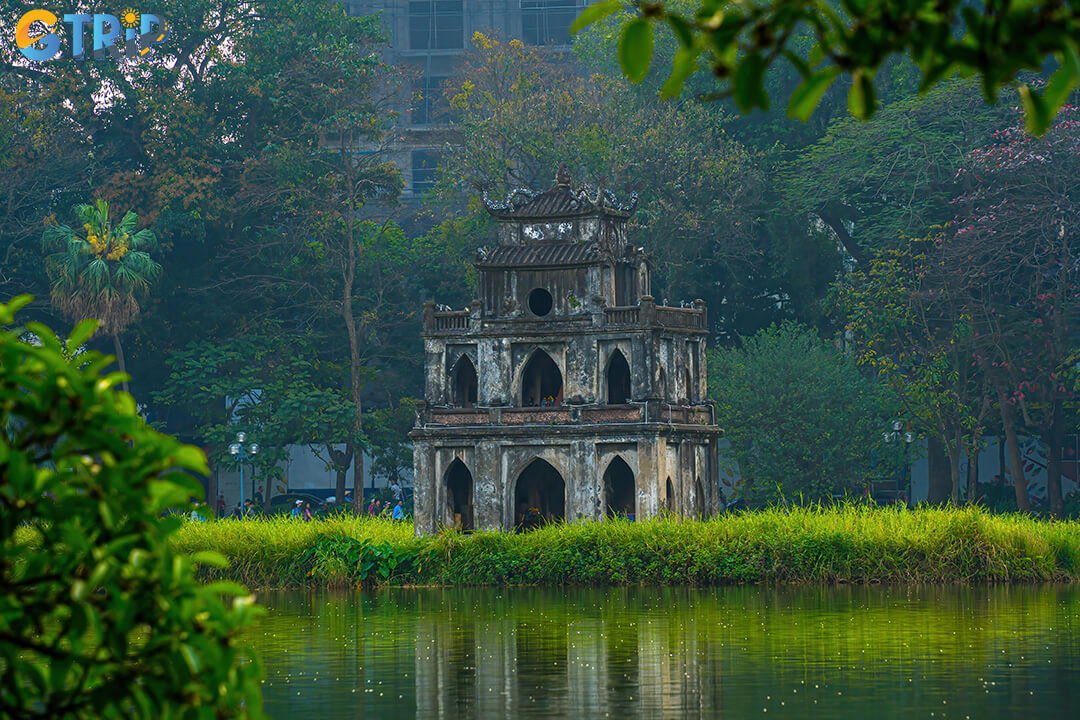
Turtle Tower has evolved from its debated beginnings into a beloved national icon, symbolizing Hanoi’s founding legend and the enduring spirit of its people
Architecture of Turtle Tower in Hanoi
Turtle Tower is a unique blend of French Gothic and traditional Vietnamese architecture, reflecting the cultural crossroads of 19th-century Vietnam. Standing about 10 meters tall with a rectangular base, it balances simplicity with historical depth. The lower floors feature Gothic-style arched windows, while the curved Vietnamese roof is adorned with dragon carvings facing the moon, creating a harmonious East-West fusion that makes Turtle Tower an iconic landmark of Hanoi.
First floor
The first floor of Turtle Tower is built on a 0.8-meter-high foundation. It has a rectangular shape with a length of 6.28 meters and a width of 4.54 meters. This floor features 10 arched doors, with three on the longer sides and two on the shorter sides. Inside, it is divided into three rooms connected by doorways, all with pointed Gothic arches reminiscent of European church architecture. Four doors are separating the rooms, totalling 14 doors on this floor.
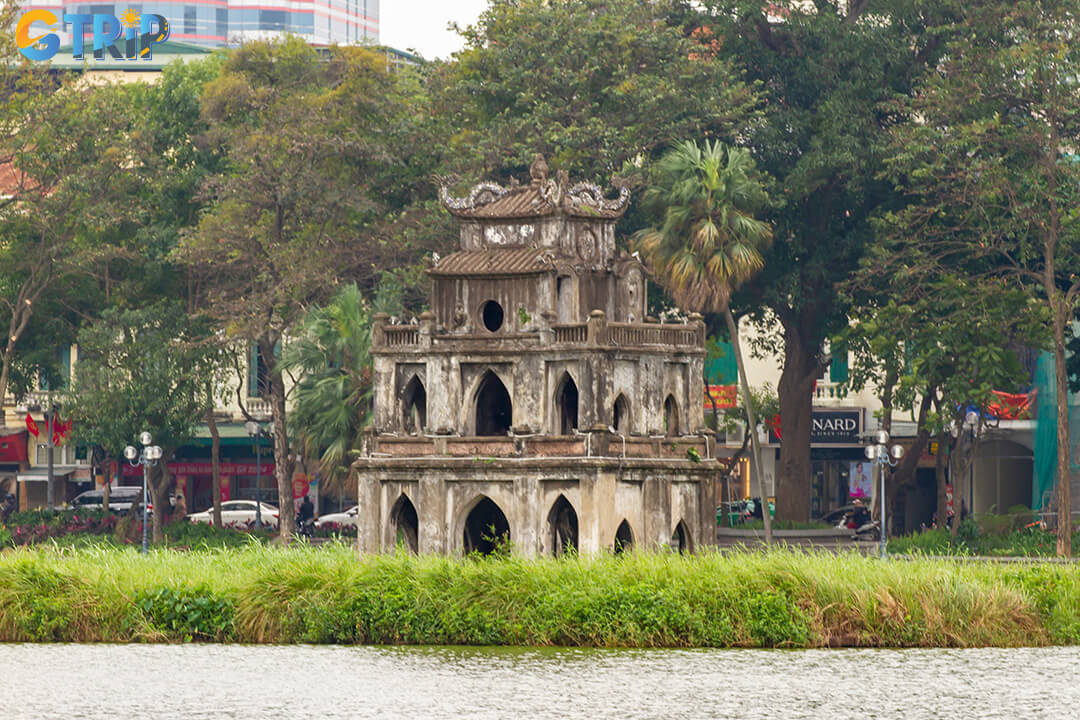
The first floor of Turtle Tower has a rectangular plan with three rooms and 14 Gothic-style arched doors
Second floor
The second floor is slightly recessed from the first, measuring 4.8 meters in length and 3.64 meters in width. It maintains the same three-room layout and has 14 doors like the first floor, however, these are smaller in size. The Gothic pointed arch style is also consistent with the lower floor, creating a unified architectural look between the two floors.
Third floor and roof
The third floor is smaller, with dimensions of 2.97 meters by 1.9 meters. It has only one door, which is round and faces east, measuring 0.68 meters in diameter. On the west wall inside there is a small altar, whose dedication is not clearly known but is believed to be for the father of Nguyen Ngoc Kim, the builder of the tower. The very top of the tower is a square pavilion or watchtower shape, each side measuring 2 meters. Above the circular door on the third floor is the inscription "Quy Son Thap", meaning "Turtle Mountain Tower". Rising gracefully from the islet, the Turtle Tower reaches a total height of 8.8 meters from its base to the tip.
This structure beautifully blends Gothic European influences in the arches and windows of the lower floors. At the same time, it incorporates traditional Vietnamese curved roof eaves and dragon motifs, marking the tower as a unique symbol of Hanoi.
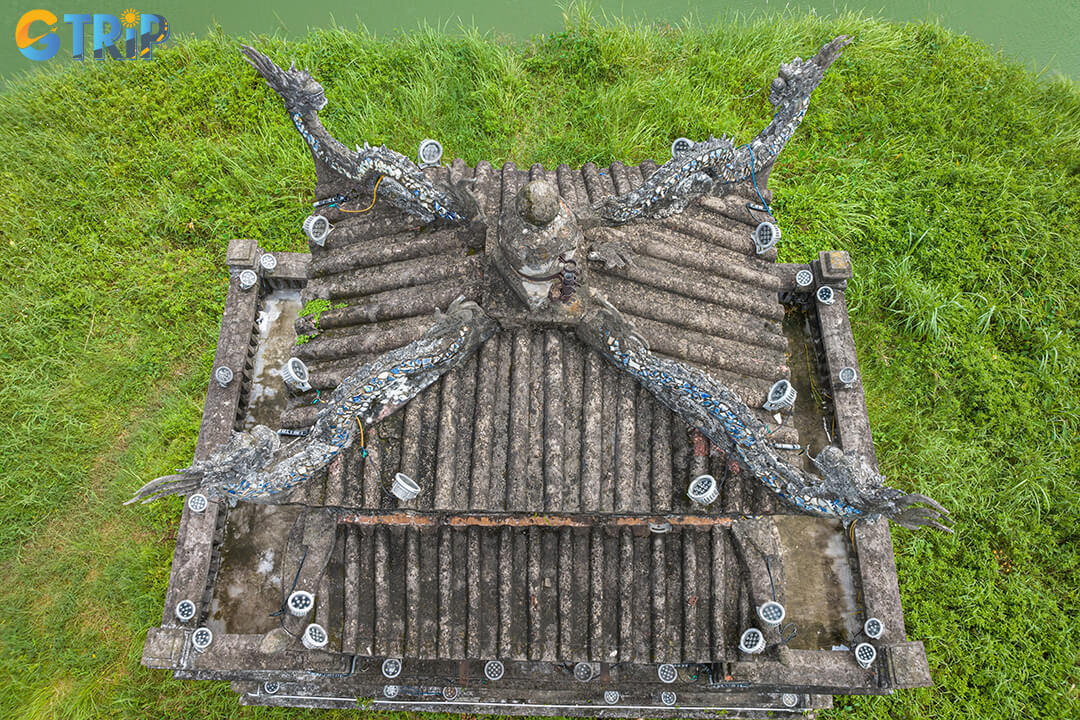
Breathtaking aerial close-up of Turtle Tower, capturing every intricate detail of this iconic landmark rising gracefully from the heart of Hoan Kiem Lake
Other attractions near Turtle Tower
The area surrounding Hoan Kiem Lake is a treasure trove of Hanoi's most famous attractions. A walk around the lake is not just a scenic stroll but a journey through the city's cultural and historical heart. Everything listed here is within a short and pleasant walk from any point on the lake's shore.
1. Ngoc Son Temple - Pen Tower
- Distance from Turtle Tower: Approximately 500 meters (a 5-minute walk along the lake shore).
- Travel time: Allow 20-30 minutes to walk across the bridge, explore the temple grounds, and enjoy the views back towards the shore.
Ngoc Son Temple is a famous spiritual and cultural landmark located on a small islet in the northern part of Hoan Kiem Lake. Built in the 19th century, the temple honors several important figures in Vietnamese history, including the national hero Tran Hung Dao and the scholarly deity Van Xuong De Quan. Connected to the mainland by the iconic red-painted The Huc Bridge, Ngoc Son Temple showcases a harmonious blend of Vietnamese and Chinese architectural styles. The temple is a symbol of Hanoi’s rich cultural heritage and historical resilience, attracting many visitors for its serene beauty and spiritual significance.
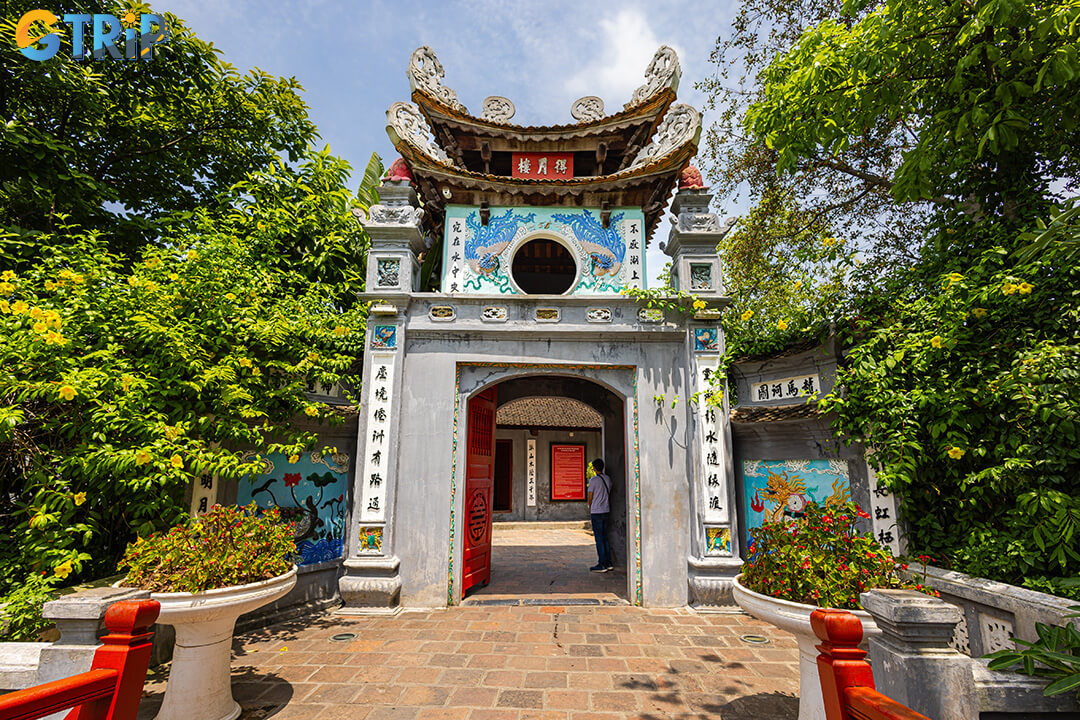
Ngoc Son Temple is a renowned 19th-century landmark honoring national heroes and embodying Hanoi’s cultural and spiritual heritage
2. The Huc Bridge
- Distance from Turtle Tower: Approximately 500 meters (a 5-minute walk along the lake shore).
- Travel time: Allow 20-30 minutes to walk across the bridge, explore the temple grounds, and enjoy the views back towards the shore.
The Huc Bridge is a striking red wooden bridge that spans Hoan Kiem Lake, connecting the lakeshore to Ngoc Son Temple on a small island. Built in 1865 during the reign of King Tu Duc by the scholar Nguyen Van Sieu, this curved bridge is approximately 45 meters long and supported by 32 wooden pillars arranged in pairs. Its vibrant red color symbolizes vitality and happiness, while the name "The Huc" means "Morning Sunlight" reflecting its eastward orientation designed to welcome the first rays of sunlight. The bridge’s elegant arch and traditional Vietnamese design make it a functional passage and a celebrated cultural and architectural icon of Hanoi. It has undergone several restorations to preserve its structure, remaining a beloved symbol that bridges the city's bustling life with the peaceful spiritual world of Ngoc Son Temple.
3. Hanoi Old Quarter
- Distance from Turtle Tower: The edge of the Old Quarter is immediately adjacent to the northern end of Hoan Kiem Lake, a 2-minute walk.
- Travel time: You could spend anywhere from two hours to an entire day exploring, shopping, and eating your way through its energetic streets.
Just north of the lake lies the legendary Hanoi Old Quarter. This labyrinth of 36 historic streets is the commercial and cultural soul of the city. Each street was traditionally dedicated to a specific craft or trade, like Hang Bac or Hang Gai. Get lost in the vibrant energy of this maze of bustling lanes, where every corner offers a new sensory experience, from sizzling street food stalls to artisan shops and ancient "tube houses". To truly understand the city's pulse, a visit here is essential.
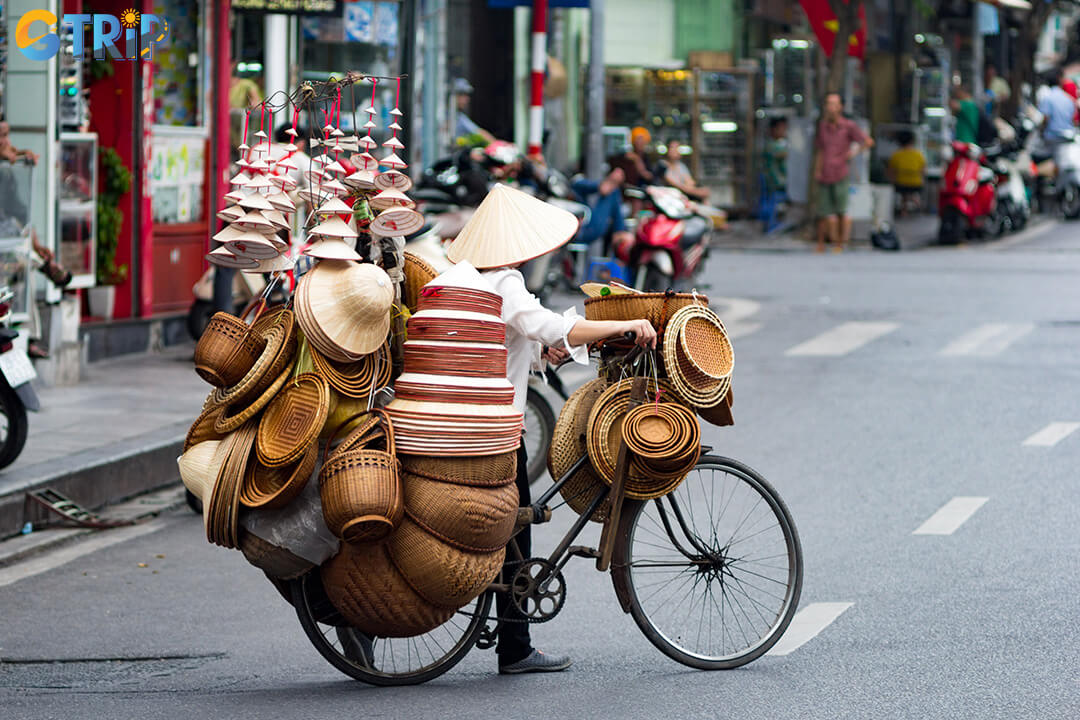
Hanoi’s Old Quarter, with its 36 historic streets, is a lively maze of craft shops, street food, and ancient houses, capturing the city’s cultural and commercial soul
4. Thang Long Water Puppet Theatre
- Distance from Turtle Tower: Approximately 700 meters (an 8-10 minute walk).
- Travel time: The show lasts about 50 minutes. It's wise to book tickets in advance, especially for evening performances.
Located on the northeastern edge of the lake, Thang Long Water Puppet Theatre showcases a unique and ancient Vietnamese art form. Skilled puppeteers, hidden behind a screen, control wooden puppets on a pool of water, bringing to life scenes of rural life, folklore, and historical legends, including the famous tale of King Le Loi and the Golden Turtle. It’s a delightful cultural experience for all ages.
5. St. Joseph's Cathedral
- Distance from Turtle Tower: Approximately 600 meters west of the lake (a 7-minute walk).
- Travel time: A 15-30 minute visit is enough to admire the exterior and step inside to see the nave (if open to visitors).
A stunning example of neo-Gothic architecture, St. Joseph's Cathedral feels like a piece of medieval Europe transported to the heart of Hanoi. Completed in 1886, the same year as the Turtle Tower, its towering twin spires, stained-glass windows, and grand facade offer a striking contrast to the surrounding Vietnamese architecture. It serves as the main cathedral for the Roman Catholic Archdiocese of Hanoi.
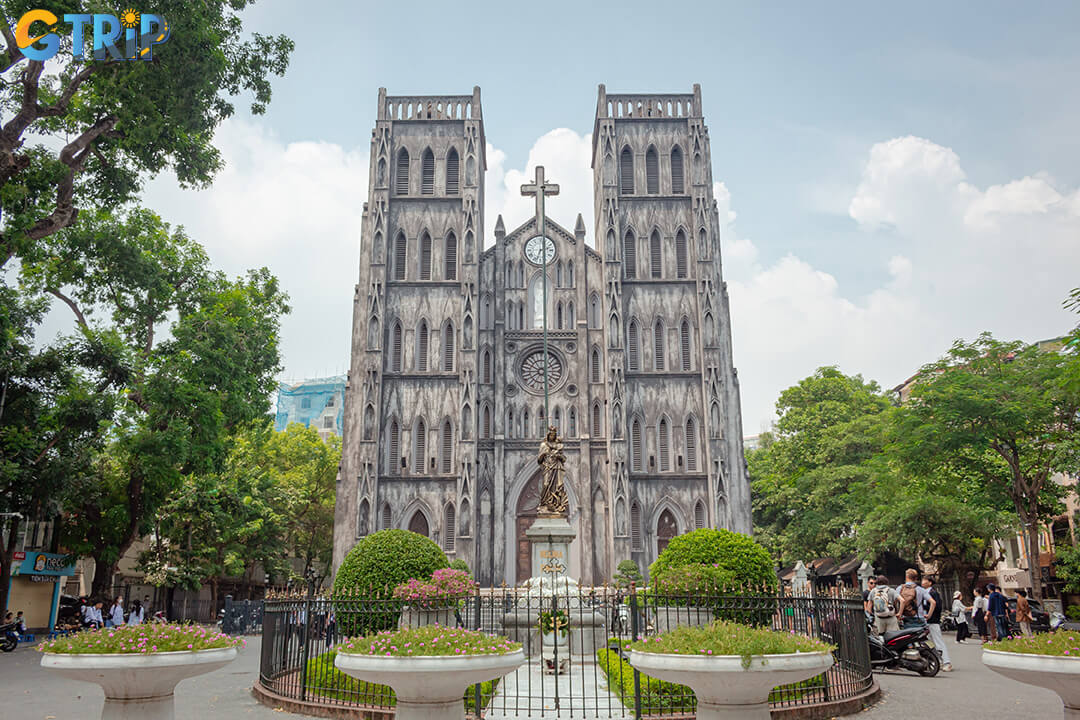
St. Joseph’s Cathedral, completed in 1886, is a neo-Gothic landmark with soaring spires and stained-glass windows, standing as Hanoi’s main Catholic cathedral
6. Hanoi Opera House
- Distance from Turtle Tower: Approximately 1 km (a 12-15 minute walk).
- Travel time: A 15-minute visit to see the exterior is sufficient, but attending a performance is a wonderful evening activity.
Situated at the heart of the French Quarter, a short walk from the southeastern side of Hoan Kiem Lake, the Hanoi Opera House is one of the city's most spectacular colonial buildings. Modelled after the Palais Garnier in Paris, this magnificent structure was completed in 1911. Today, it hosts major concerts, ballets, and operatic performances. Even if you don't see a show, admiring its opulent French colonial architecture is a must.
7. Dong Xuan Market
- Distance from Turtle Tower: Approximately 1.5 km north of the lake (a 20-minute walk through the Old Quarter).
- Travel time: Allow at least 1-2 hours to get a feel for the market's immense scale and vibrant atmosphere.
For a truly local experience, head to Dong Xuan Market, Hanoi's largest indoor market. Housed in a historic Soviet-style building, this sprawling market is a chaotic, fascinating hub of commerce. You can find everything here, from bulk textiles and household goods on the ground floor to souvenirs and clothing on the upper levels. The surrounding streets are also home to a legendary night market and some of the best street food in the city.
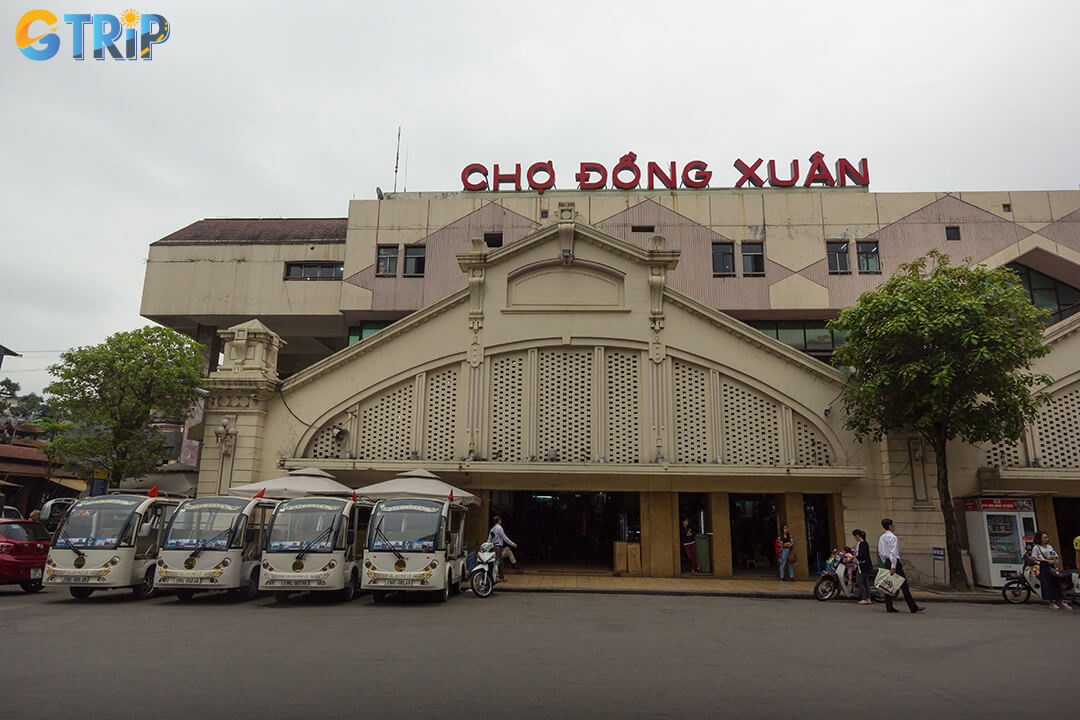
Dong Xuan Market is a bustling hub in a historic Soviet-style building, offering everything from textiles to street food and a lively night market nearby
Read more:
The Turtle Tower is the soul of Hanoi, crystallised into a single, poetic form. It does not need to be entered to be experienced. Its power lies in its constant, silent presence in the center of the lake, witnessing the flow of centuries and the daily lives of the city's people. It stands as a powerful testament to legend, a symbol of unwavering national spirit, and the tranquil heart of Vietnam's captivating capital. When you visit Hanoi, take the time to walk the shores of Hoan Kiem Lake, find a bench under a shady tree, and simply gaze upon the tower. Let GTrip - Vietnam Travel Agency be your guide to unlocking the secrets of this incredible city and the timeless stories it holds.

